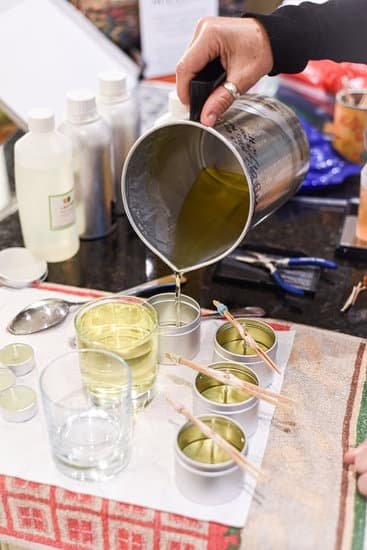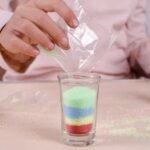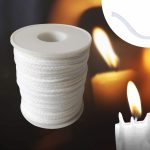In recent years, essential oils have gained immense popularity in various industries, including candle making. These oils not only add fragrance to the candles but also offer potential therapeutic benefits. However, as with any product used in crafting, it is important to understand the safety considerations involved. This article will delve into the safety of using essential oils in candle making, exploring their benefits, drawbacks, potential risks, and key factors to consider.
Before we can fully assess the safety of essential oils in candle making, it is crucial to understand what these oils are and how they are obtained. Essential oils are highly concentrated plant extracts that capture the natural scent and essence of plants. They are obtained through various methods such as steam distillation or cold-press extraction. Each essential oil has its unique composition and properties, which can impact their safety when used in candle making.
As we explore the safety of essential oils in candle making, we will examine their benefits and drawbacks. On one hand, essential oils can provide a wide range of aromas and potentially offer therapeutic effects such as relaxation or stress relief.
On the other hand, certain essential oils may have limitations or sensitivities that need to be considered when incorporating them into candles. By understanding both the advantages and potential drawbacks of using essential oils in candle making, you can make informed decisions about which oils to use and how to use them safely.
Overall, while essential oils can enhance your candles with delightful scents and possible health benefits, it is crucial to prioritize safety when incorporating them into your craft. The next section will further explore key factors to consider when using essential oils in candle making to ensure a safe experience for both makers and consumers alike.
What are Essential Oils and How are They Obtained?
Essential oils are highly concentrated plant extracts that are obtained through various methods of extraction. These oils are known for their aromatic properties and are commonly used in candle making to add fragrance. Essential oils can be extracted from different parts of plants such as leaves, flowers, bark, stems, and roots.
There are several methods used to obtain essential oils, including steam distillation, cold pressing, and solvent extraction. Steam distillation is the most common method and involves passing steam through the plant material to release the volatile compounds which are then condensed to obtain the oil. Cold pressing is generally used for citrus fruits and involves mechanically pressing the rind of the fruit to extract the oil. Solvent extraction uses chemical solvents to dissolve the essential oil from the plant material.
The quality and purity of essential oils can vary depending on factors such as the plant source, growing conditions, extraction method, and storage practices. It is important to choose high-quality essential oils for candle making to ensure a safe and effective product.
Examining the Benefits and Drawbacks of Essential Oils in Candle Making
When it comes to candle making, using essential oils can add a unique aromatic experience to your creations. Essential oils are highly concentrated plant extracts obtained from various parts of plants, including the flowers, leaves, stems, or roots. These oils are often cherished for their therapeutic properties and enticing fragrances. However, while essential oils offer many benefits for candle making, there are also some drawbacks to consider.
Benefits:
- Aromatic Experience: One of the primary reasons candle makers choose to use essential oils is for their pleasant scents. Each essential oil has its own distinct aroma, allowing you to create candles with various fragrance profiles to suit different moods or purposes.
- Therapeutic Properties: Many essential oils have therapeutic properties that can enhance well-being and promote relaxation when used in candle making. For example, lavender essential oil is known for its calming effects, while citrus oils like lemon or orange can uplift mood and energize the atmosphere.
- Natural and Chemical-Free Option: Essential oils are derived from natural plant sources, making them an appealing choice for those seeking a more natural and chemical-free option in candle making. This can be especially beneficial for individuals who may have sensitivities or allergies to synthetic fragrances.
Drawbacks:
- Limited Scent Throw: Compared to synthetic fragrance oils, essential oils generally have a lighter scent throw when used in candles. This means that the fragrance may not disperse as strongly throughout a room when burning an essential oil-infused candle.
- Volatility: Some essential oils have lower flash points than others, which can impact their suitability for candle making. Flash point refers to the temperature at which an oil is likely to catch fire if exposed to an open flame. Oils with low flash points may pose safety risks during the manufacturing process and when burning the candle.
- Cost: Essential oils can be more expensive than synthetic fragrance oils, especially those sourced from rare or exotic plants. This cost can make it challenging for candle makers on a tight budget to incorporate a wide variety of essential oils into their creations.
While there are benefits and drawbacks to using essential oils in candle making, understanding these factors can help you make informed decisions about which oils to use and how to use them safely.
Key Factors to Consider when Using Essential Oils in Candle Making
When using essential oils in candle making, there are several key factors that need to be considered. These factors will help ensure the safe and effective use of essential oils in your candles.
Quality and Purity
One of the most important factors to consider when using essential oils in candle making is the quality and purity of the oils. It is crucial to choose high-quality essential oils that are pure and free from any additives or synthetic ingredients. Poor quality or impure oils may not only affect the scent of your candles, but they can also pose safety risks.
To determine the quality of essential oils, look for reputable suppliers who provide detailed information about their sourcing and manufacturing processes. Certification by a third-party organization such as the International Organization for Standardization (ISO) can also be an indication of quality.
Dosage and Dilution
Another important factor to consider when using essential oils in candle making is the proper dosage and dilution ratio. Essential oils are highly concentrated substances that need to be diluted before being added to your candle wax. Failure to dilute essential oils properly can result in overpowering scents, skin irritation, or even combustion risks.
It is recommended to follow specific guidelines provided by reputable sources such as fragrance calculators or experts in candle making. These guidelines typically recommend a certain percentage of essential oil per weight or volume of wax to ensure both safety and optimal scent diffusion.
Heat Stability
The heat stability of an essential oil is another critical factor to consider when using it in candle making. Some essential oils can withstand higher temperatures without losing their fragrance, while others may degrade or change their scent profile when exposed to heat.
Before incorporating any essential oil into your candles, it is important to research its specific heat stability properties. Look for information on temperature ranges at which an oil retains its scent properties effectively, as exceeding these ranges may result in an unpleasant or altered fragrance.
By considering these key factors – quality and purity, dosage and dilution, and heat stability – you can ensure the safe and effective use of essential oils in your candle making process. Taking these factors into account will not only help you create high-quality candles but also minimize any potential safety risks.
Understanding the Potential Risks and Safety Issues Associated with Essential Oils
Essential oils have gained popularity in recent years for their various uses, including candle making. While they can provide a pleasant aroma and therapeutic benefits, it is important to understand the potential risks and safety issues associated with essential oils in candle making. This section will explore some of the main concerns regarding the use of essential oils in candles.
Skin Sensitization
One of the primary risks of using essential oils in candle making is skin sensitization. Some essential oils contain compounds that can cause allergic reactions or skin irritation when they come into direct contact with the skin.
It is important to be aware of any potential sensitivities or allergies you or your intended users may have before using certain essential oils. Additionally, some individuals may have increased sensitivity or reactions to certain essential oil components, so it is advisable to do a patch test before using them in candles.
Respiratory Irritation
Another concern with using essential oils in candles is respiratory irritation. When burned, certain essential oils can release volatile organic compounds (VOCs), which can irritate the respiratory system and potentially cause adverse health effects. Individuals with respiratory conditions such as asthma or allergies may be particularly sensitive to these VOCs. It is recommended to use essential oils sparingly and ensure proper ventilation when burning candles containing them.
Phototoxicity
Certain citrus-based essential oils possess phototoxic properties, meaning they can cause skin damage when exposed to ultraviolet (UV) light. If these oils are used in candles and individuals come into contact with the spilled wax on their skin and then expose themselves to sunlight or UV rays, it can lead to burns or other skin issues. It is crucial to be knowledgeable about which essential oils are considered phototoxic and take appropriate precautions to prevent any potential harm.
Overall, while there are potential risks associated with using essential oils in candle making, these risks can be mitigated by taking appropriate precautions and being informed about the specific oils being used. The next section will discuss best practices for using essential oils safely in candle making to reduce the likelihood of experiencing these potential risks.
Best Practices for Using Essential Oils Safely in Candle Making
Using essential oils safely in candle making is crucial to ensure the well-being of both the maker and the end user. While essential oils can provide a beautiful scent and therapeutic benefits to candles, it is important to understand and follow best practices to avoid any potential risks or safety issues. Here are some key recommendations to consider when using essential oils in candle making:
Dilute Essential Oils Properly
Essential oils are highly concentrated plant extracts and should never be used undiluted in candles. It is important to dilute them properly with a carrier oil or wax before adding them to your candle recipe. A general guideline is to use no more than 6-10% essential oil dilution per each ounce of melted wax.
Choose Essential Oils with Caution
Not all essential oils are suitable for candle making, as some may be too volatile or have low flash points that can lead to combustion or unwanted reactions. Research and choose essential oils that have high flash points and are safe for candle use, such as lavender, citrus, vanilla, or eucalyptus.
Follow Recommended Usage Rates
Each essential oil has its own recommended usage rate based on safety guidelines. It is crucial to adhere to these guidelines and not exceed the recommended amount. Overusing certain essential oils can potentially cause irritation or other adverse effects.
Consider Allergies and Sensitivities
Some individuals may have allergies or sensitivities to specific essential oils. Before using an essential oil in your candles, it’s important to consider whether it may cause any adverse reactions for those who will be exposed to the fragrance.
Use Good Ventilation
When working with essential oils in candle making, it’s important to have proper ventilation in the workspace. Good air circulation helps to reduce exposure to concentrated essential oils and any potential respiratory irritation.
Wear Protective Gear
To minimize direct contact with undiluted essential oils, it is recommended to wear gloves and safety glasses when handling them. This precaution helps prevent skin irritation or accidental contact with eyes.
Following these best practices will help ensure that you are using essential oils safely in candle making. It’s also important to stay updated on industry standards and guidelines regarding essential oil usage specific to candle making. By prioritizing safety, you can create beautiful candles without compromising on the well-being of yourself or others.
Exploring Popular Essential Oils for Candle Making and their Safety Profiles
Essential oils are popular choices for adding fragrance to candles, as they can provide a natural and soothing scent. However, it is important to consider the safety profiles of these essential oils before using them in candle making. Different essential oils have different safety considerations, and it is crucial to understand their potential risks and benefits.
One popular essential oil for candle making is lavender oil. Lavender oil has a calming and relaxing scent, which makes it a favorite among candle makers. It can also help relieve stress and promote better sleep. However, it is important to note that lavender oil may cause skin irritation or allergic reactions in some individuals. It is always recommended to conduct a patch test before using lavender oil in your candles.
Another commonly used essential oil in candle making is citrus oil, such as lemon or orange oil. These oils have uplifting and refreshing scents that can create an energizing atmosphere. However, citrus oils are known to be phototoxic, meaning they can increase the skin’s sensitivity to sunlight and cause sunburns or skin discoloration when exposed to the sun. Therefore, it is important to use caution when incorporating citrus oils into your candles.
| Essential Oil | Safety Considerations |
|---|---|
| Lavender Oil | Potential for skin irritation or allergic reactions |
| Citrus Oils (lemon, orange) | Phototoxicity – increased sensitivity to sunlight |
| Eucalyptus Oil | Avoid use around children or pets, can be toxic if ingested |
| Peppermint Oil | Avoid use in high concentrations, can cause skin irritation or allergic reactions |
It is important to note that this table only provides a brief overview of some popular essential oils and their safety considerations. It is always recommended to thoroughly research and consult reliable sources before using any essential oil in candle making. Additionally, it is crucial to follow proper dilution guidelines and never exceed the recommended usage rates to ensure safety and quality in your candles.
Tips for Testing Essential Oils for Candle Making to Ensure Safety and Quality
When it comes to using essential oils in candle making, it is crucial to ensure both safety and quality. Testing your essential oils before using them in your candles can help you achieve this goal. Here are some tips for testing essential oils for candle making to ensure safety and quality.
Firstly, it is important to note that not all essential oils are safe for candle making. Certain essential oils have a low flash point, which means they can ignite easily when exposed to heat. Before using any essential oil, research its individual flash point to determine if it is suitable for candle making. Additionally, consider the specific scent profile of the oil and whether it complements the other ingredients in your candles.
One way to test an essential oil for candle making is through a cold throw test. This involves adding a few drops of the oil onto a cotton ball or tissue and placing it in a jar or container with the lid on.
Leave the jar undisturbed for at least 24 hours before opening and taking a whiff of the aroma. If the scent is pleasant and strong enough, it may indicate that the essential oil will work well in your candles.
Another test you can perform is a hot throw test. Mix a small amount of the essential oil with melted wax at a ratio of 1 ounce of oil per pound of wax. Pour this mixture into a small mold or container and allow it to set completely.
Trim off any excess wax from the top so that only the scented portion remains. Burn the test candle for several hours, observing its scent diffusion and overall performance. If you are satisfied with the results, then you know that particular essential oil is safe and of good quality for candle making.
By testing your essential oils before incorporating them into your candles, you can ensure both safety and quality in your final products. Remember to keep accurate records of these tests, noting down any observations or changes you make along the way. This will help you maintain consistency and track the success of each essential oil in your candle making endeavors.
How to Properly Store Essential Oils for Candle Making to Maintain their Safety
Storing essential oils properly is crucial for maintaining their safety and preserving their quality when used in candle making. Essential oils are highly concentrated and volatile substances, which means that they can degrade if not stored correctly. Exposure to heat, light, air, and moisture can negatively affect the chemical composition and potency of the oils.
To ensure the safety of essential oils for candle making, it is important to store them in dark-colored glass bottles or containers. This helps to protect the oils from direct sunlight, which can cause degradation. Additionally, using glass containers prevents any potential chemical reactions between the oils and plastic containers.
It is recommended to store essential oils in a cool and dry place. Excessive heat can speed up the oxidation process of the oils, leading to a shorter shelf life. A cupboard or drawer away from heat sources such as radiators or stoves is an ideal storage location. Avoid storing essential oils in bathrooms or other areas with high humidity levels, as moisture can also affect their quality.
Properly sealing the bottles or containers is another crucial aspect of storing essential oils safely. Make sure that the lids or caps are tightly closed after each use to prevent air from entering and oxidizing the oil. Oxygen exposure can cause deterioration and a decrease in potency over time.
By following these storage practices, you can ensure that your essential oils remain safe and effective for candle making. Investing in good-quality dark glass bottles, finding a suitable storage place away from heat and moisture, and sealing them tightly will help maintain the integrity of your essential oils for longer periods of time.
Summary
In conclusion, the safety of using essential oils in candle making is a topic that requires careful consideration. While essential oils offer numerous benefits such as fragrance and potential therapeutic effects, there are also potential risks and safety issues associated with their use.
It is important to consider several key factors when using essential oils in candle making. These include understanding their potency and proper dilution, ensuring they are suitable for candle use, and being aware of any specific safety guidelines or restrictions for each individual oil.
Testing essential oils before incorporating them into candles is crucial for ensuring both their safety and quality. This can involve conducting small-scale tests to assess the fragrance throw, burn performance, and overall compatibility of the oil with the chosen wax and wick.
Proper storage of essential oils is also essential to maintain their safety over time. They should be stored in dark glass bottles in a cool, dry place away from direct sunlight or heat sources. Additionally, it is important to label bottles correctly and keep them out of reach of children or pets.
In summary, while essential oils can be safely used in candle making when proper guidelines are followed, it is crucial to educate oneself on their safe usage. By understanding the potential risks and adhering to best practices, candle makers can enjoy the benefits that essential oils bring while ensuring the safety and quality of their finished products.
Frequently Asked Questions
Is it safe to use essential oils in homemade candles?
Using essential oils in homemade candles can be safe, but it is important to use them properly and with caution. Essential oils are highly concentrated extracts from plants, and while they can add a wonderful aroma to candles, they should be used sparingly. It is crucial to follow recommended guidelines for dilution rates when adding essential oils to candle wax.
Overusing or not properly diluting essential oils can lead to an overpowering scent or even potential irritation when the candle is burned. Additionally, certain essential oils may have a low flashpoint, meaning they could catch fire at lower temperatures, so it’s important to consider the safety aspects when using them in homemade candles.
Is it better to use fragrance oil or essential oil for candle making?
The choice between fragrance oil and essential oil for candle making depends on personal preferences and intended use. Fragrance oils are synthetic scents specifically formulated for candles, offering a wide range of options and often stronger throw or scent diffusion compared to essential oils. They are also generally more affordable than many pure essential oils.
On the other hand, essential oils are derived from natural sources and may provide a more authentic scent experience due to their botanical origins. However, essential oils can vary greatly in quality and purity, which can affect their performance in candle making. It’s important to choose reputable suppliers that offer high-quality and well-tested fragrance or essential oils suited for candle making.
Is peppermint essential oil safe for candles?
Peppermint essential oil can be safe for candles if used correctly. Peppermint oil has a refreshing aroma that many people enjoy, but like all essential oils, it needs to be handled with care when making candles. The key consideration with peppermint oil is its slightly higher natural menthol content compared to some other essential oils.
Menthol has a cooling effect on the skin and mucous membranes, which means peppermint-scented candles could potentially cause discomfort or irritation if too strong or used in enclosed spaces without proper ventilation. Diluting peppermint oil properly according to recommended guidelines and using it in moderation can help ensure the safe use of peppermint essential oil in candles.

Welcome to my candle making blog! In this blog, I will be sharing my tips and tricks for making candles. I will also be sharing some of my favorite recipes.





